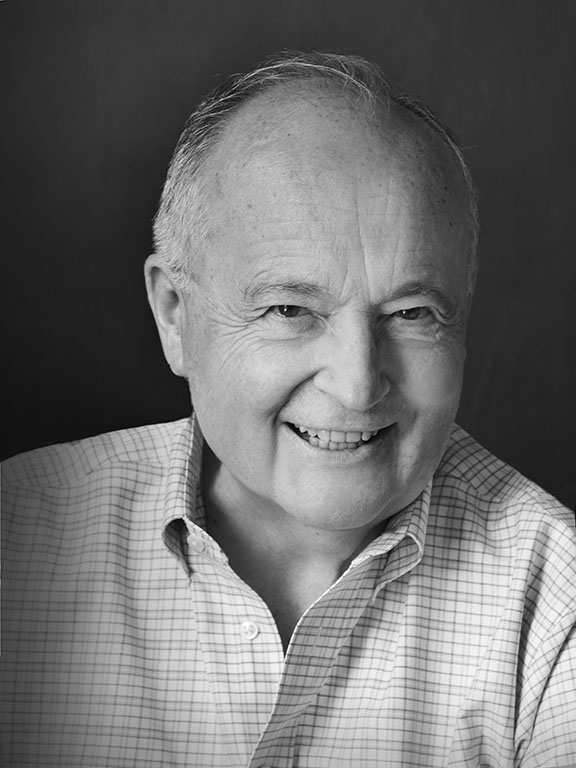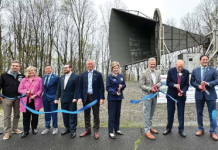By Chris Rotolo
It’s high tide in the Bayshore during an unseasonably warm winter’s day. At the midpoint of a gravel section of the Henry Hudson Trail that connects Atlantic Highlands to Popamora Point in the neighboring borough of Highlands, waves roll into a coastal rock wall. The collision sprays salty mist into the air, which catches sun beams, resembling sparks off a flint. The natural effect accentuates the flight path of a flock of seagulls flying toward the coast from the direction of Sandy Hook.
The ability to observe this serene coastal landscape, and a variety of other natural beauties located across the county, is owed in large part to the love with which James J. Truncer approached his lifelong labor as Monmouth County Parks System director.
Though Truncer died Feb. 19 at the age of 86, while surrounded by family, he leaves behind an enduring legacy to be enjoyed by the millions of patrons who visit county parks each year.
Over the course of nearly six decades as parks director, Truncer’s perspective on the conservation of lands and the establishment of educational programming for the purpose of public recreation, relaxation and advancement, was the genesis for what has become one of the most celebrated systems of county parks in the country.
Truncer’s influence expands from the rocky banks of the Bayshore to Mount Mitchill Scenic Overlook (the highest point of elevation on the Atlantic Coast); oceanfront property at Seven Presidents Park, countless natural preserves and a multitude of federally recognized historic sites that speak to local participation in revolutionary activities and technological advancement – not to mention the rail trails, hiking paths and protected marshlands available for recreational and naturalist activities alike.
During a September 2000 interview with the Monmouth County Library System as part of a county oral history initiative, Truncer discussed the motivations that inspired the development of the parks system from its humble beginnings in 1965 – which included 12 employees overseeing 350 acres on three park sites – to an agency with hundreds of personnel managing the upkeep of 18,000 acres across 37 parks, six golf courses and 148 miles of trails.
Chief among those ambitions was a desire to educate the youth, as well as to connect the local population to the concept of biophilia, the evolutionary human desire to be in or near nature.
“In a very modest way, we started providing introductory programming in the late 1960s and early 1970s. Many of (the programs) were, and still are, outdoor education and nature education series meant to connect with schools and groups outside of school,” Truncer said in the 2000 interview. “The snakes (and wildlife on display at the Manasquan Reservoir and Huber Woods Environmental Center), hikes, archeological programs, gathering of sharks teeth (at the Big Brook and Poricy Park fossil beds), and a variety of other activities are all intended to introduce people to the world around them.”
According to Monmouth County Board of County Commissioners Director Thomas A. Arnone, from the perspective of education and naturalist tendencies, over the decades the park system became an extension of Truncer, with his passion to share the community’s natural beauty with its populace driving the expansion.
“What we see before us today speaks to the type of person Jim was. He was a kind and gentle man; bright and creative in his thinking and planning. He was a dedicated husband and father, and that dedication extended to the parks system. The park system was his baby,” Arnone told The Two River Times. “But he was also a teacher of the system. That was what lit him up inside. And he spent a lifetime doing all he could to share that passion with his neighbors.”
Truncer’s tenure with Monmouth County began in 1964, when he volunteered on the Board of Recreation Commissioners. The following year, he was appointed park system director, which at the time was simply a park planning position with oversight from the planning board and highway department. When he was appointed, studies conducted by planning board director Charles Pike and appropriations by the county freeholders allowed for the acquisition of lands that would become Holmdel Park, Shark River Park in Wall and Turkey Swamp Park in Freehold Township.
Arnone said Truncer remained true to his initial job description, placing an emphasis on planning throughout his 58-year career.
“When we talk about our park system, (Truncer) is the past, present and future of it. And that’s because of his foresight, innovation and ability to plan; not just for what needs to be done today, but 20, 30, 50 years from now,” Arnone said. “Even though Jim is not physically here with us, his legacy will live on through his planning. Things will fall into place with the development of Swimming River Park (Middletown), and the expansion of the Henry Hudson Trail (into downtown Freehold), and countless other developments, because Jim has made it easy for it all to fall into place.”
Including the aforementioned construction of Swimming River Park on Front Street in the Red Bank section of Middletown, and ongoing efforts to bridge the gaps on the Henry Hudson Trail’s southern extension to create a continuous path from Popamora Point in Highlands to Main Street in Freehold Borough, there are currently 12 development and land management projects in the works for the parks system, each one intended to make county spaces accessible and welcoming centers of education and recreation.
It’s just as Truncer intended.
“I guess I’d like to say that what happens today was thought about, and was based on what we thought about and did 20-plus years ago, good and bad,” Truncer said in that 2000 oral history interview. “I think you have to think of that horizon of 20-plus years. If we don’t, opportunities are lost. People are accustomed to thinking in terms of their immediate needs – what’s happening now – and not necessarily thinking in terms of what we need to do today to prepare for what may inevitably happen 20 years from now.”
“It makes me sad to think that Jim won’t be able to see everything that is going to come about very soon. That he won’t be able to see it all come to fruition,” Arnone said. “But we’re thankful for his commitment and dedication and that his legacy will be honored through these future works. The hard work came from Jim.”
Truncer was predeceased by his wife of 63 years, Ramona Rue Truncer, and is survived by his children and their spouses, Jim and Melissa Truncer of Newton, Massachusetts, and Rebecca and Kent Watkins of Cassatt, South Carolina; his grandchildren, Morgan Truncer, William Truncer and Seth Watkins; and his sister Judee Wales and her husband Tom Watson.
The article originally appeared in the March 23 – 29, 2023 print edition of The Two River Times.















